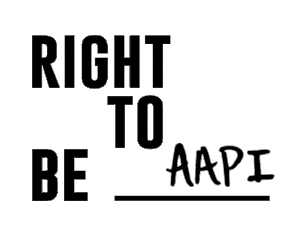First, observe the environment. Pay attention to the behavior of the people involved from a safe distance. At this point, ask yourself if you are the right person to step in.
To help you analyze the situation, use Right To Be’s “Pyramid of Escalation.”
This is simply a tool to determine how escalated the situation you’re observing is. The lowest level is agitation, followed by escalation, followed finally by peak conflict. Agitation includes signs like aggressive body language, eye-rolling, and loud sighs. (Keep in mind, though, that gestures such as eye-rolling can sometimes be displayed by folks who are neurodivergent, such as autistic folks, without aggressive intentions behind them.) Escalation includes signs like pacing, finger pointing, aggressive tone, raised voice, or argument. Peak conflict includes signs like verbal abuse (i.e. shaming, humiliation, harassment), spitting or inappropriate touching/gestures, physical aggression, or possible display of weapons. Observe where the situation is on the pyramid. Ask yourself: Could my identities put me at increased risk? Is the person escalating the situation intoxicated?
Without full preparation and awareness of the dangers, getting involved in conflict poses a risk to everyone involved, and can possibly make things worse. When de-escalating a situation, always prioritize your own safety. If you are unable to de-escalate safely, utilize Right To Be’s 5Ds of bystander intervention instead.
After you are fully aware of what you are stepping into, breathe before you take any sort of action.
We can’t emphasize enough that safety is the number one priority when it comes to de-escalating a conflict – and if you are agitated, anxious, or angry when you intervene, the situation could escalate and put you and others in increased danger.
Each of us has our own strategies to self-soothe. Maybe yours is to take three deep breaths, or maybe it’s to release the tension in your stance by relaxing your shoulders, fists, and knees one by one. You can try box breathing: inhale for 4 seconds, hold for 4 seconds, exhale for 4 seconds, and hold for 4 seconds – and then repeat the cycle for several rounds.
Fun fact: box breathing is a strategy used by members of the military before they approach a conflict or stressful situation. It’s key to de-escalate ourselves before de-escalating others. If we neglect this, we increase the likelihood of adding more tension and built-up emotions to an already volatile, potentially dangerous, situation. Please, check in with yourself before you decide to show up for others.
Here are more ideas for de-escalating your own emotions first:
- Breathe deeply
- Self-encouragement/mantras, affirmations, or meditations
- Notice if you’re clenching or tightening parts of your body
- Feel your feet on the ground (and your back in your chair if you have one)
- Talk to someone you trust
- Name your emotions
- Find ways to release emotion
Now that you have safely analyzed the situation and your own level of agitation, and you feel grounded in your abilities, you’re ready to step in.
The proven way to de-escalate a situation? Connection. By connecting with the person, you’ve created an opportunity to build empathy for everyone involved…and from here comes progress. Through empathy, we’re able to validate and de-escalate each other’s feelings, even when we don’t understand them. Conflict de-escalation is not about acting as a mediator and coming to some sort of peaceful resolution. Instead, our goal when de-escalating a conflict is to give that person the feeling that they are heard, and that not everyone is out to get them.
How can you connect? Ask this person if they would like to have a conversation with you; offer to walk them somewhere away from the conflict; ask clarifying and open-ended questions that allow you to repeat back to them what they’ve told you. Give this individual your undivided attention by maintaining soft direct eye contact. Focus on their feelings, not their opinions. Remember that there are some experiences and emotions that you may not understand or agree with, and you don’t have to understand or agree with them to assure them that what they’re going through is valid, to bring down the energy level. De-escalating a conflict isn’t the place for arguing, disregarding, belittling, or any sort of lengthy monologue. It’s just about bringing volatile feelings to a less explosive level.
Our hope is that with these tips, you’ll be able to make a difference.





